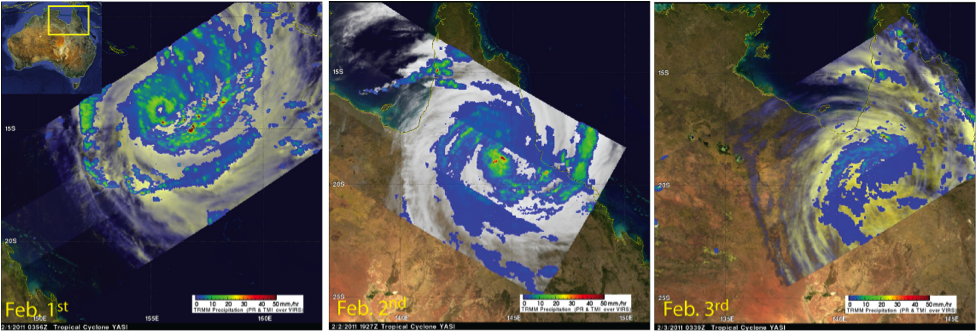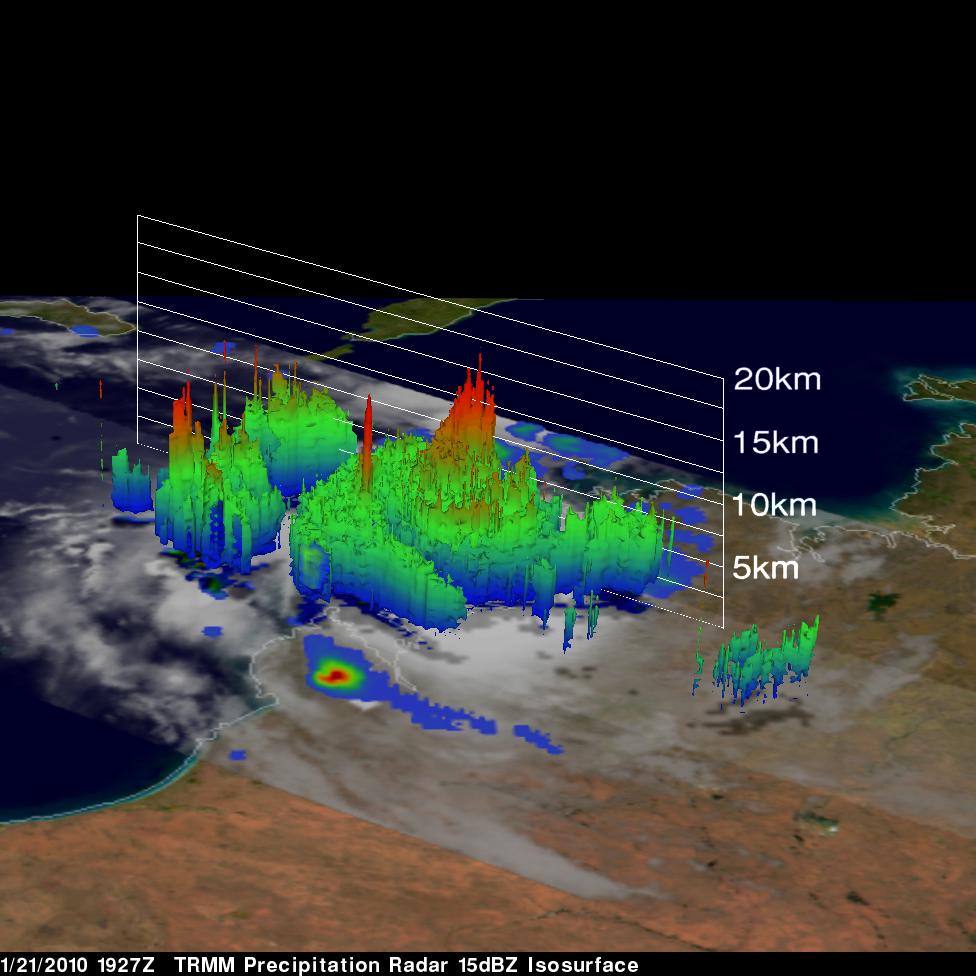Orbit of the TRMM Satellite
A visual description of the TRMM satellite's tropical orbit between 35º North and 35º South.
Content which is associated solely with the Tropical Rainfall Measuring Mission.
A visual description of the TRMM satellite's tropical orbit between 35º North and 35º South.

TRMM’s TMI and PR instruments observed Cyclone Yasi as it developed from a Category 3 tropical cyclone (Feb. 1st, left), to a Category 5 event (Feb. 2nd) when it made landfall with wind gusts reported at up to 186 mph, and then finally as it began to dissipate on Feb. 3rd (right).

Image showing TRMM's Precipitation Radar (PR) and the TRMM Microwave Imager (TMI) instrument resolving the intensifying thunderstorms near a tropical cyclone Magda’s eyewall off the northwest coast of Australia on January 21st, 2010.